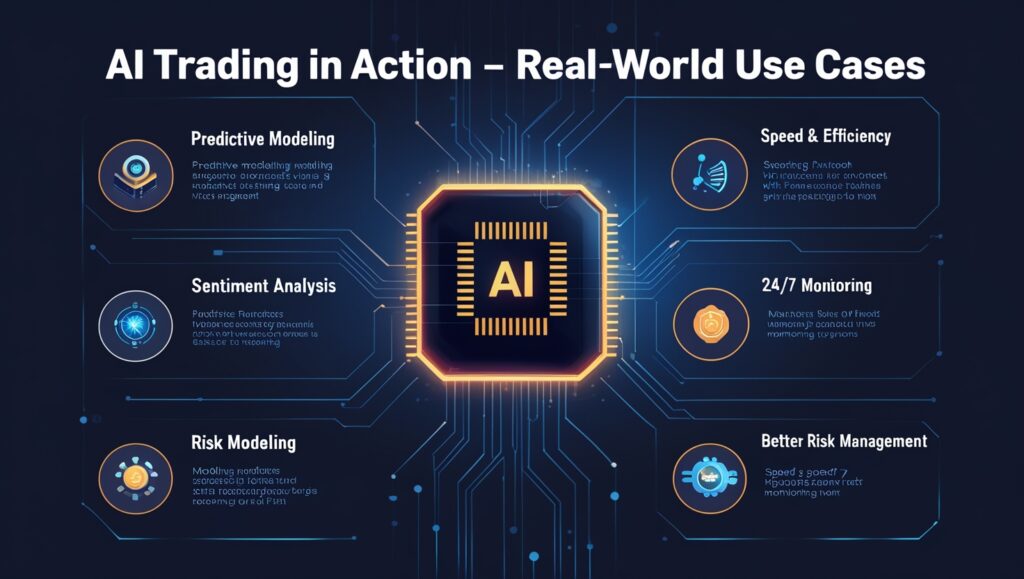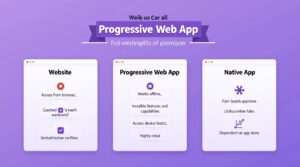click to get service View profile
Learn how to trade like a pro using AI in trading. Avoid the hype, spot misleading signals, and build smart, data-driven strategies that work.
In a world where algorithms move markets in milliseconds and buzzwords like “AI in trading” dominate financial headlines, it’s easy to get swept up in the hype. From automated bots promising overnight profits to complex models predicting market trends, artificial intelligence is quickly becoming a go-to tool for traders of all levels.
But here’s the truth: AI is a powerful ally only when used wisely. Blindly following AI-generated signals can lead to poor decisions, false confidence, and costly mistakes. Professional traders know the secret lies in balancing AI insights with human intuition, market experience, and strategy.
In this guide, we’ll explore how to harness the potential of AI in trading—not as a crutch, but as a smart companion. Whether you’re a beginner or a seasoned investor, this article will help you cut through the noise, avoid the common traps, and trade like a pro with the help of AI.
AI in Trading: A Quick Look Under the Hood
Trading has always demanded speed, precision, and a strong gut instinct. Now, with the rise of AI in trading, a new era has begun—where intelligent algorithms can analyze massive datasets in real time, uncover patterns, and react to market shifts faster than any human ever could. This evolution is transforming both traditional and algorithmic trading strategies, giving traders a powerful edge when used correctly.
With the power to analyze historical data, real-time news, and even social media sentiment (yes, those Twitter rants count), AI in trading is reshaping how investment decisions are made. Unlike human traders, who are often swayed by emotions and prone to panic-selling during downturns, AI systems stay calm and data-driven—unaffected by fear, FOMO, or market noise. This cool, calculated approach gives AI-powered trading platforms a significant edge in today’s volatile markets.
AI Trading in Action: Real-World Use Cases

AI in stock trading isn’t just theoretical—it’s already shaping investment strategies in multiple ways:
1. Predictive Modeling
AI doesn’t have a crystal ball, but it comes close. By analysing historical data, it predicts stock movements and market trends.
2. Sentiment Analysis
AI scours news articles, financial blogs, and social media to gauge investor sentiment. (Translation: It knows when Elon Musk tweets something ridiculous before you do.)
3. Risk Modeling
AI calculates the risk of different trades, so you can make smarter decisions—without needing a PhD in finance.
4. Automated Trading (Algo Trading)
AI can automatically execute trades based on pre-set conditions, ensuring you don’t miss opportunities while binge-watching Netflix.
5. Real-Time Market Analysis
Unlike humans, AI never sleeps. It continuously monitors stock prices, making instant adjustments based on market conditions. This real-time market analysis AI-driven capability gives traders a sharp edge.
How AI Does the Heavy Lifting in Trading
AI doesn’t just randomly pick stocks like your uncle at a Diwali card game. It follows a systematic process:
1. Data Collection
AI scrapes data from financial reports, market trends, and even social media to gauge sentiment.
2. Data Cleaning
No one likes messy data, especially AI. It filters data into a standard format, organizes inconsistencies, and ensures everything makes sense.
3. Pattern Recognition
AI identifies trends that might take human analysts years (or at least several cups of chai) to spot.
4. Decision Making
AI suggests whether to buy, sell, or hold—often faster than you can Google, “Is now a good time to invest?”
5. Execution
AI can automatically place trades, so you don’t have to stare at candlestick charts all day. (You’re welcome.)
6. Monitoring & Adaptation
Markets change, and AI learns. It tweaks its strategies based on real-time fluctuations, keeping up better than most traders’ attention spans.
The Perks of Letting AI Take the Wheel
So, why should traders embrace AI? Here are a few reasons:
- Speed & Efficiency: AI processes information at lightning speed, reducing the lag between data analysis and action.
- Reduced Emotional Bias: AI doesn’t have panic attacks when the market drops 5% in a day.
- 24/7 Market Monitoring: AI doesn’t need sleep, coffee, or motivational pep talks.
- Better Risk Management: AI can flag potential risks in real time.
- More Opportunities for Retail Investors: Once the playground of institutional investors, AI tools for traders are now available to everyday traders, making high-level analysis accessible to all.
The Flip Side: AI Isn’t Perfect
While AI in trading offers remarkable speed and analytical power, it’s far from foolproof. It can’t foresee black swan events like the COVID-19 pandemic, and its decisions are only as reliable as the data it’s trained on. Relying solely on AI to manage your portfolio can feel risky—after all, there’s something unsettling about letting an algorithm dictate your financial future without human oversight.
Regulators are also keeping a close eye on AI in trading. SEBI has introduced guidelines to ensure AI-driven strategies are transparent and don’t lead to market manipulation. In short, AI is great—but it still needs human oversight. SEBI’s involvement in AI stock trading India regulations is a critical step forward.
AI-Driven Stock Trading Design Trends in India

AI in trading is rapidly transforming how Indians approach the stock market—from the design of intuitive trading apps to the advanced tools and insights they deliver. Modern platforms now harness AI for real-time data analysis, personalized recommendations, and smart automation, all tailored to meet the needs of India’s growing mobile-first investor community.
UI/UX Design Trends in AI-Powered Trading Platforms
Personalised and User-Centric Experiences
AI tailors trading experiences to each user’s style, offering custom dashboards, alerts, and investment suggestions. These experiences are core to any modern AI powered stock trading platform.
Simplified Layouts with Advanced Options
Trading platforms now strike a balance between simplicity and depth. A good example of UI UX design trends for trading platforms.
Mobile-First & Responsive Design
With India’s growing mobile trading population, platforms are designed for smartphones first.
Interactive Assistance & Accessibility
AI-powered chatbots and voice assistants are making trading more conversational.
Data Visualisation for Smarter Decision-Making
Stock trading is data-heavy, but AI is making sense of the chaos:
Advanced Charting & AI Overlays
Real-time charts with AI-powered insights highlight key market patterns.
Clear & Intuitive Visuals
Pie charts, heatmaps, and trend arrows simplify decision-making. These tools define data visualization for trading platforms.
AI-Powered Trading Interfaces & Tools
Intelligent Dashboards & Predictive Insights
AI now gives traders a heads-up on potential market moves, risk factors, and suggested trades. These predictive insights are now central to many stock trading platforms in India.
No-Code Algo Trading & Automation
Now, even non-programmers can set up automated trading strategies. Welcome to the world of no-code algo trading.
Conclusion: AI as Your Trading Sidekick (Not Your Replacement)
AI in trading isn’t here to replace human traders—but it’s definitely redefining how the game is played. Whether you’re a seasoned investor or just starting out, AI-powered platforms provide smart insights, automated workflows, and effective risk management tools to enhance your trading strategy. By embracing AI in trading, both professional and retail investors can improve their decision-making, boost efficiency, and trade with greater confidence and precision.
The key takeaway? AI can give you an edge, but it’s not an autopilot button for financial success.
This is just the beginning—in future editions we will take a closer look at how AI and design work hand in hand to create smarter, more intuitive trading experiences.
Frequently Asked Questions (FAQs)
1. What is AI in trading?
AI in trading refers to the use of artificial intelligence algorithms to analyze market data, predict trends, automate trades, and improve decision-making in the stock, crypto, or forex markets.
2. Can AI really help me trade like a pro?
Yes, when used correctly, AI can enhance your strategy by offering data-driven insights, minimizing emotional bias, and identifying patterns you might miss. However, it’s not a substitute for financial knowledge and risk management.
3. Is AI in trading safe to rely on?
AI is a powerful tool, but it’s only as good as the data it’s trained on. It can’t predict unexpected events (like a market crash), so it should be used alongside human judgment and sound trading strategies.
4. Do I need coding skills to use AI-powered trading platforms?
Not at all. Many modern platforms offer user-friendly interfaces and built-in AI features that don’t require any technical knowledge. However, some advanced traders use custom algorithms for greater control.
5. Can beginners use AI in trading?
Absolutely. In fact, beginners can benefit from AI’s ability to provide real-time insights, education, and even automated trading options. Just be cautious of over-relying on it without understanding the basics.
6. How can I avoid falling for overhyped AI trading tools?
Look for platforms with a solid track record, transparent strategies, and educational support. Be wary of tools that promise guaranteed returns or seem too good to be true—because they probably are.
7. Is AI in trading better than traditional trading methods?
Not necessarily better—just different. AI adds speed, scale, and data analysis, but human intuition, experience, and market awareness are still essential. The best results come from combining both.
8. How much does it cost to use AI-powered trading tools?
Costs vary depending on the platform. Some offer free AI features, while others charge for premium insights, algorithmic strategies, or automation capabilities.

